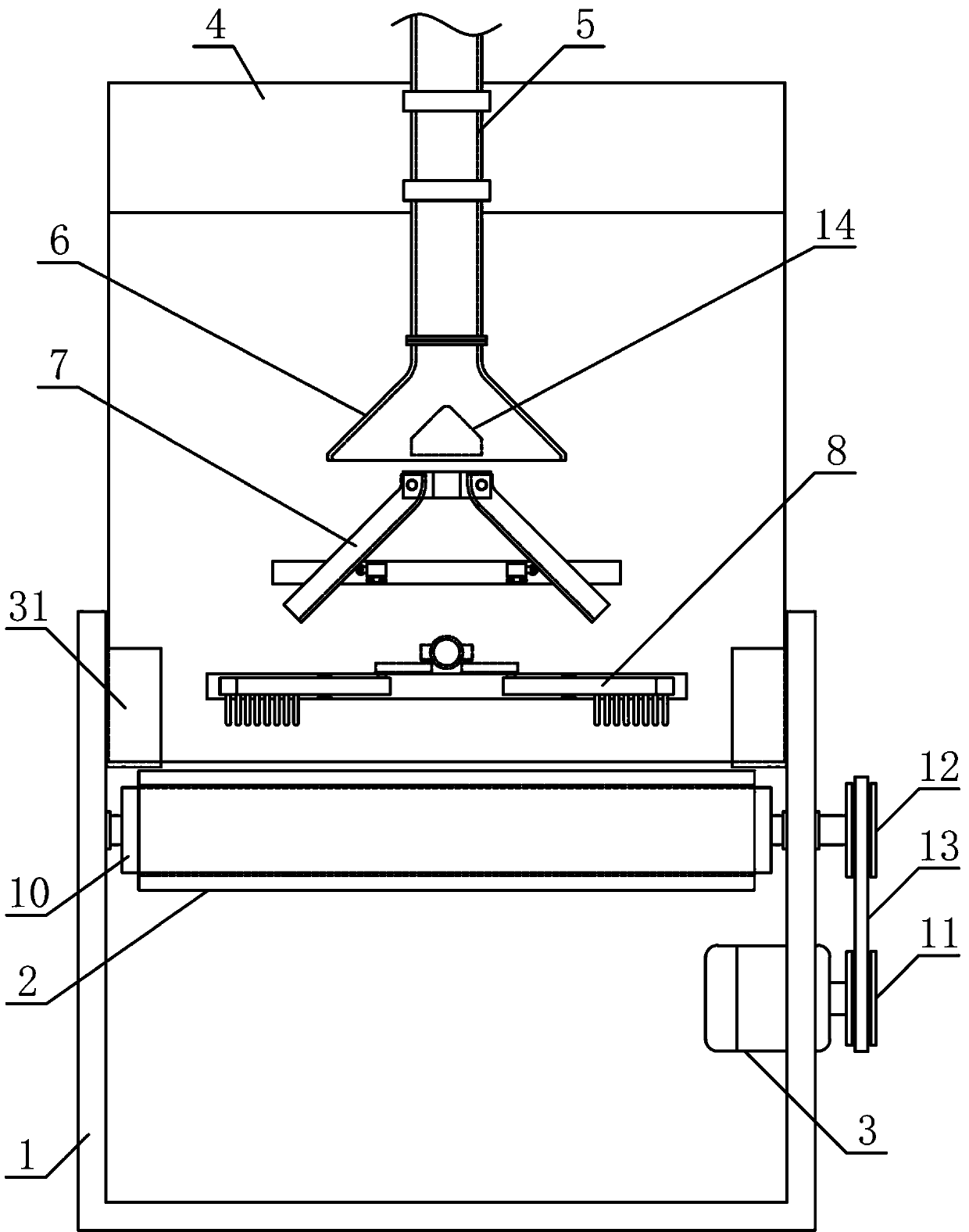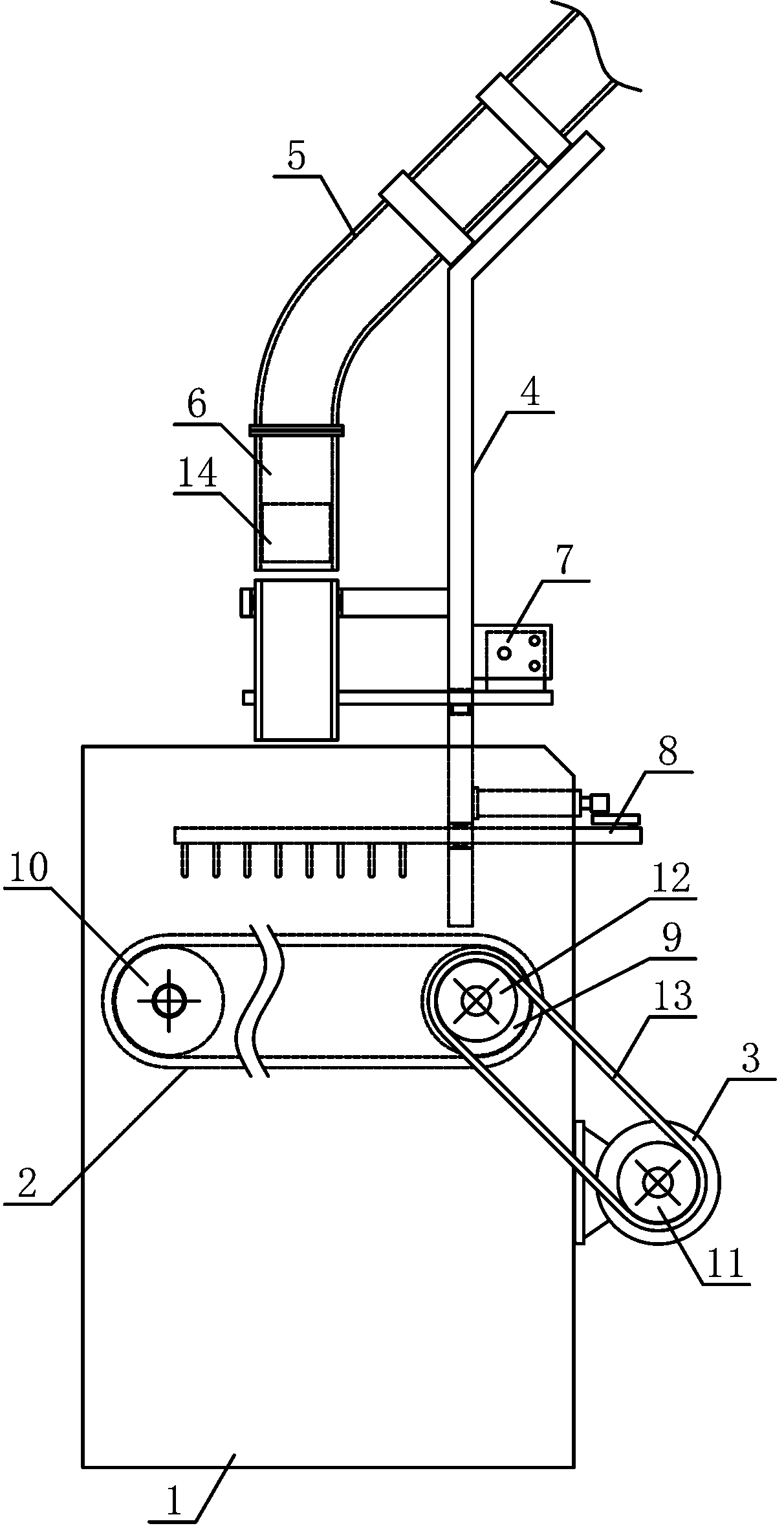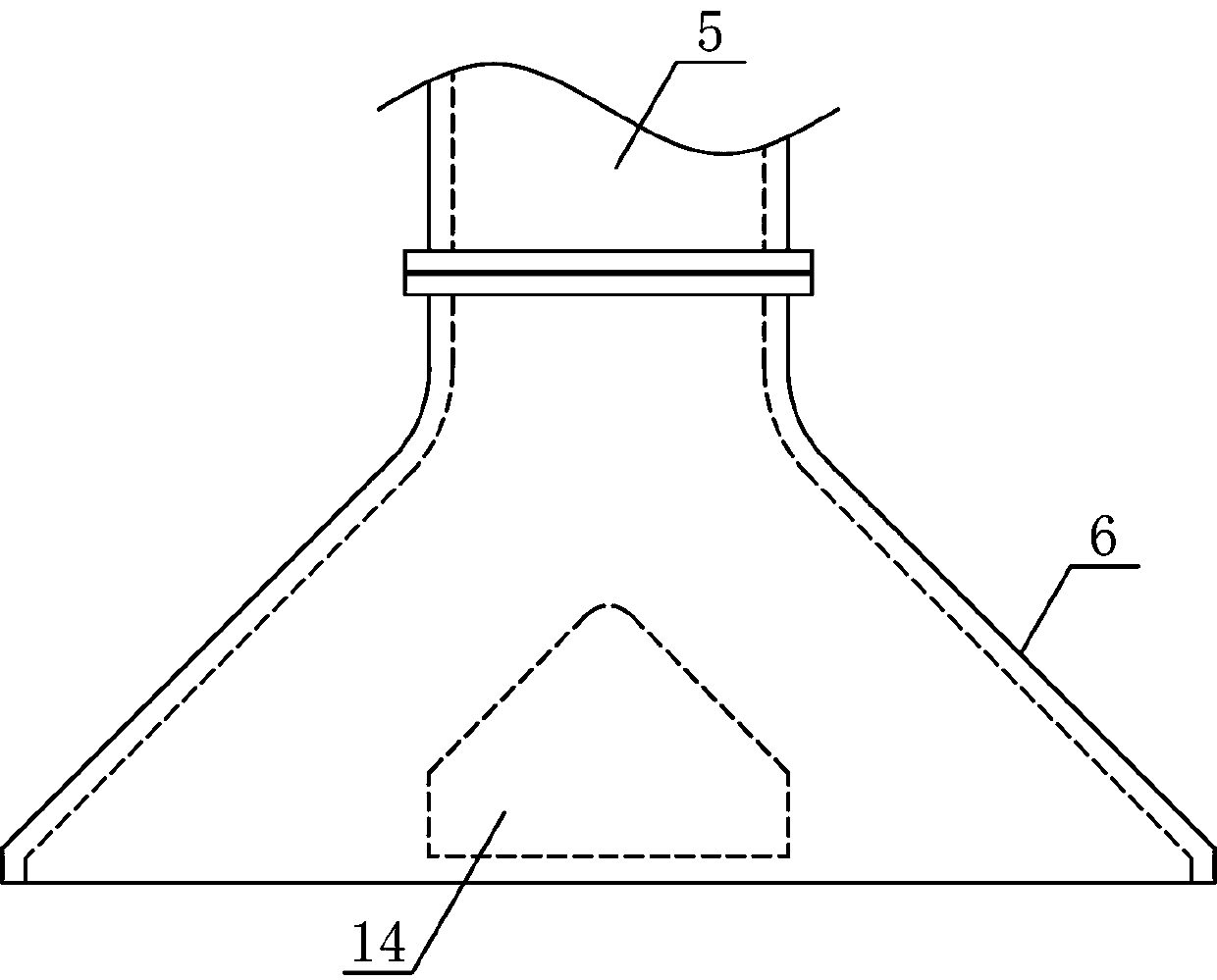Wool fabric feeding transmitting mechanism
A conveying mechanism and feeding technology, which is applied to conveyors, conveyor objects, transportation and packaging, etc., can solve the problems of high work intensity, high quality of difficult-to-wool textiles, and can not meet processing and use, and achieves reasonable structural design and increased Width range effect
- Summary
- Abstract
- Description
- Claims
- Application Information
AI Technical Summary
Problems solved by technology
Method used
Image
Examples
Embodiment Construction
[0019] In order to further describe the present invention, a specific implementation of a wool spinning feed conveying mechanism will be further described below in conjunction with the accompanying drawings. The following examples are explanations of the present invention and the present invention is not limited to the following examples.
[0020] Such as figure 1 with figure 2As shown, a woolen feeding transmission mechanism of the present invention includes a material guide bracket 1, a material transmission belt 2, a material transmission motor 3, a blanking bracket 4, a material transmission conduit 5, a wide-mouth blanking tube 6, and a swing mechanism 7 And the bulk material mechanism 8, the first turning roller 9 and the second turning roller 10 are respectively horizontally connected to the two sides of the material guide bracket 1, the material transfer belt 2 is horizontally arranged in the middle part of the material guide bracket 1, and the material transfer belt ...
PUM
 Login to View More
Login to View More Abstract
Description
Claims
Application Information
 Login to View More
Login to View More - R&D
- Intellectual Property
- Life Sciences
- Materials
- Tech Scout
- Unparalleled Data Quality
- Higher Quality Content
- 60% Fewer Hallucinations
Browse by: Latest US Patents, China's latest patents, Technical Efficacy Thesaurus, Application Domain, Technology Topic, Popular Technical Reports.
© 2025 PatSnap. All rights reserved.Legal|Privacy policy|Modern Slavery Act Transparency Statement|Sitemap|About US| Contact US: help@patsnap.com



